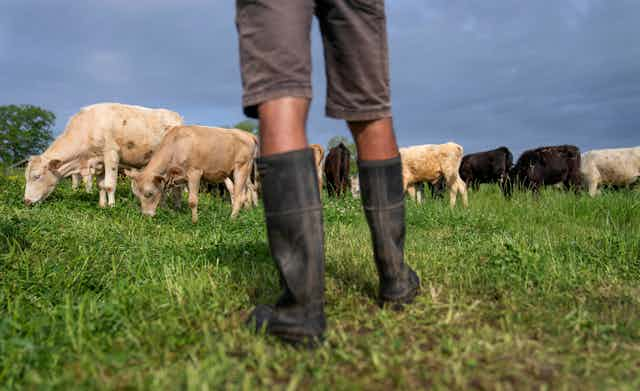On March 11, 2024, it will be four years since the World Health Organization characterized the SARS-CoV-2 outbreak as a pandemic. And while COVID-19 continues to impact people globally, it is only the most recent in a long history of pandemics with likely origins in animals. Examples include plague, which usually spreads from rodents to humans via infected fleas, and the 2009 H1N1 flu, also known as swine flu due to its origins in pigs.

Given the animal origins of past pandemics, as well as the many recent cases of disease in people linked to animals — such as anthrax, Middle East respiratory syndrome and avian influenza virus — it is very likely that the next pandemic will again originate in animals.
In fact, over 60 per cent of emerging infectious diseases in people originate in animals. Among these, more than 70 per cent are associated with wildlife. Our close interactions with animals and our shared environment is a major factor for why and how these pathogens spill over.
Pandemic prevention
Recognizing our interconnected health, there have been increased calls for primary pandemic prevention, which focuses on reducing the chance of an outbreak occurring by preventing the spread of pathogens from animals to people.
One framework for primary pandemic prevention is called “One Health.” One Health recognizes the close links among human, animal and environmental health, whereby promoting health in one part of this triad promotes the health of all.
While this concept of interconnected health has gained awareness in western science in the past century, it is not new. Instead, it is a reflection of what Indigenous Peoples have known and practised for millennia.
One Health
Global recognition of One Health has been steadily increasing. For example, the formation of the Quadripartite — which consists of global organizations including the Food and Agriculture Organization of the United Nations, the United Nations Environment Programme, the World Health Organization, and the World Organisation for Animal Health — has been focused on mobilizing One Health. The Quadripartite is advised by the One Health High Level Expert Panel.

Yet despite the interdisciplinary nature of One Health, many initiatives are still falling short. Discussions and decisions about One Health issues are often dominated by veterinary and human health sciences, sidelining the social sciences despite the crucial role of disciplines like psychology, sociology, and communications in understanding human behaviour.
Social science researchers aim to understand people — their perceptions and concerns, their histories, their socio-political, cultural and environmental contexts, and their knowledge — with a view to understanding how structural disparities affect personal and societal behaviour, health and political power.
In interdisciplinary fields such as One Health, this understanding is paramount. One Health interventions include measures such as the vaccination of livestock to prevent spillover events to people, such as Rift Valley fever, which can affect both animals and humans.
The success of these interventions hinges not only on vaccine efficacy, but also on societal factors. For example, social scientists uncover barriers faced by farmers in accessing livestock vaccination services. This ultimately improves access and ensures widespread livestock immunization, and therefore contributes to the primary prevention of future pandemics.
Recognizing intersections

Another key factor contributing to the successful implementation of One Health interventions is understanding gender dynamics in society. Often women bear the disproportionate caregiving burden, which impacts their access to health care for themselves and their livestock. Gender roles and responsibilities may also decide who interacts closely with animals, affecting possible disease exposure risks as well as narrowing down the target group for educational efforts.
Recognizing these intersections is crucial for developing inclusive and effective interventions.
And while animals may be the potential source of a future pandemic, it is also important to recognize the important positive contributions wildlife have made to our health and well-being, including their roles in the economy and food security, as well as their cultural significance.
The perception that animals are a threat to humans can lead to heightened public fears and apprehensions about wildlife, potentially reducing support for wildlife conservation.
Addressing this issue requires a deeper understanding of public perceptions, values, priorities and behaviours — emphasizing the necessity of integrating social science in the development of informed, relevant and sustainable surveillance of potential infectious disease in wildlife and conservation programs.
An interdisciplinary approach to pandemic prevention
Even beyond the role of social science in understanding the complex systems in which health risks occur, social science can also bridge communication gaps between researchers, policymakers and communities. By integrating social science into One Health approaches, we ensure that initiatives are not only scientifically sound, but also socially and culturally acceptable, appropriate and equitable for all rights holders involved.
A movement towards a true, interdisciplinary and holistic approach to primary pandemic prevention will need a proactive approach to health and well-being instead of a reactive one. It will also require us to critically examine our current health systems to identify innovative solutions to ensure its resilience.
We need to mobilize information and understanding across knowledge systems and elevate the critical role of social sciences to meaningfully integrate One Health into primary pandemic prevention in Canada.

